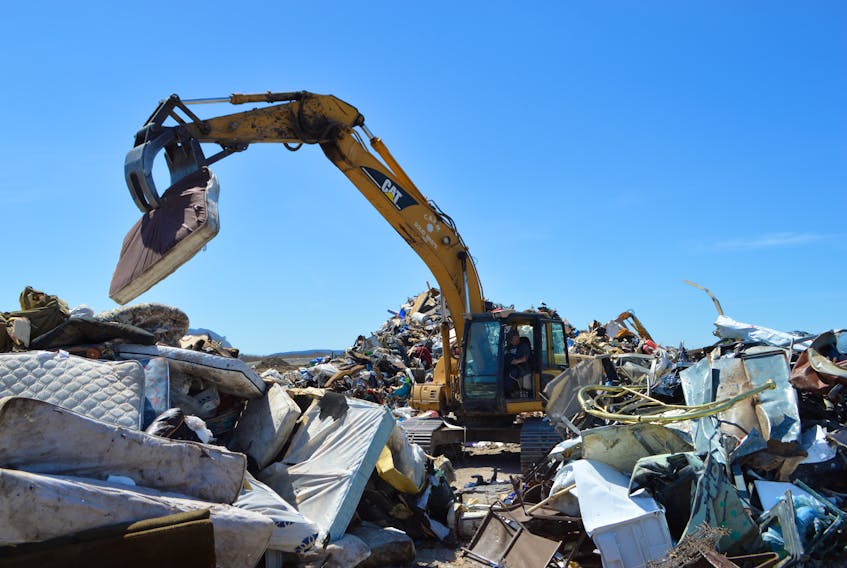We had it easier, way back when, didn’t we, back when we had no clue about the environment.
Life was simple. Throw away everything you don’t need, take the bags (and they were definitely plural in those days) to the sidewalk, and when you came home they were barely a memory, not worth thinking about.

Of course, we didn’t really have it easier. Unseen to us were landfills like Robin Hood Bay, quickly running out of space, slowly leaching into the soil, ocean and other waterways.
We’ve been working for a couple of generations now on making things better. I guess we’ve been succeeding, but it seems that the solutions we find come with complications, including the kind that make your heart ache.
Earlier this week, we witnesses the remarkable sight of Malaysia’s environment minister opening up a shipping container — that’s one big box, folks — stuffed with plastics sent for recycling.
Or was it?
“I think you need to take back your rubbish,” Yeo Bee Yin told a CBC News crew. Behind her were countless plastic bags, many of them sporting familiar Canadian supermarket brands.
“This is the irresponsible export of plastic, of waste,” she said. “It’s household garbage, it smells bad.”
I’m sure many of the Canadian consumers who put their plastics into a blue bag had no idea their bags and other inappropriate plastics were going to wind up in a shipping container in Asia.
That’s the thing. For all of our efforts to divert waste from dumps, we’re still think that once it leaves our curb, it’s no longer our problem.
In other places, like Nova Scotia, there have been startling revelations that the masses of diverted things did not get recycled as planned, but wound up having to be incinerated. The provincial government there has opened the door to allow recyclables to be burned so that fuel could be produced. That has not, as you can imagine, gone down well with ecology advocates.
Incineration does seem like a last resort, but it’s a growing one. Earlier this month, metro Vancouver emerged as the place where garbage returned from the Philippines will be incinerated.
I’m sure many of the Canadian consumers who put their plastics into a blue bag had no idea their bags and other inappropriate plastics were going to wind up in a shipping container in Asia.
Here in Newfoundland and Labrador, we’ve been pushing away from burning garbage, something that was once not uncommon in rural areas. It’s not a good practice. But the move towards what got inevitably tagged as “super dumps” has been a difficult process, even after more than a decade.
Trucking waste for hundreds of kilometres hardly seems carbon neutral, either, but my mind goes back to those containers filled with Canadian garbage in Asian ports. It’s all relative, I guess.
Maybe now is a good time to revisit the three Rs — reduce, reuse, recycle — and put a brighter spotlight on the first two.
Reduce: use less. Buy less. Avoid packaging. Very easy to say, and not so hard to do when you shop. But single use plastics are far less common in many households already, and the provincial government seems poised to move ahead. That’s just the tip of the problem, but it’s a pointy tip; it seems to me that if consumers accept that they do not need almost all of those bags, they do not need many other things, including what’s inside the packaging.
Reuse: I marvel at older generations, who found ways to reuse or repurpose everyday items. So many things — fabrics, pieces of wood, tools — were adapted to some other use. Linens became clothing; clothing became quilts. I recently learned from a friend that her grandmother had a biscuit pan made by her grandfather from a car door. Another friend has slowly been renovating her house with materials she picks up at Habitat’s Restore.
In our home, a favourite piece of furniture is a table that my husband’s grandfather — who was born when Victoria was still on the throne — crafted out of old wooden milk crates. You would never know that until you flipped it upside-down.
I think about that ingenuity and practicality more often these days. We need more ideas before we kick our next problem to the curb.
Martha Muzychka is a writer and consultant. Email: [email protected]
MORE FROM MARTHA MUZYCHKA









